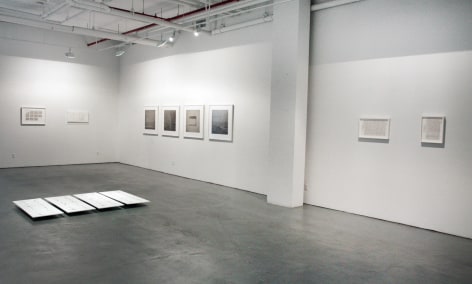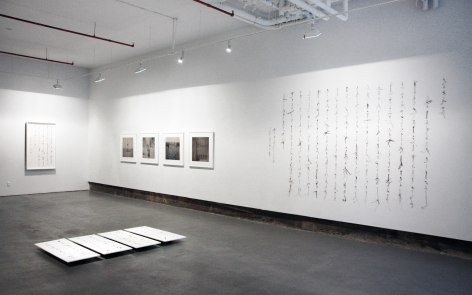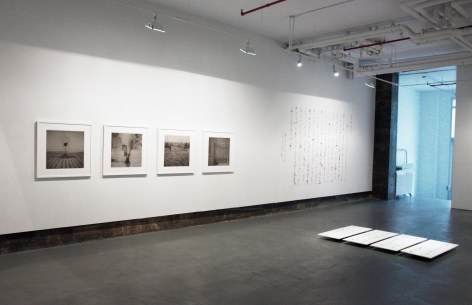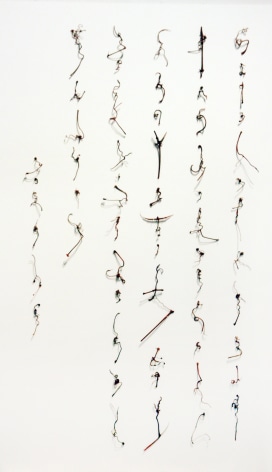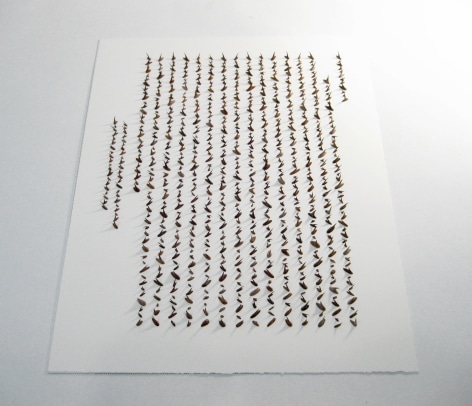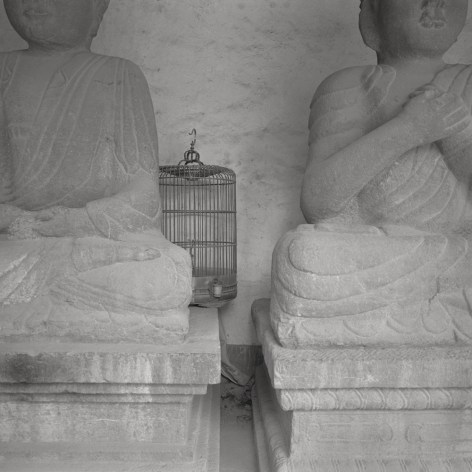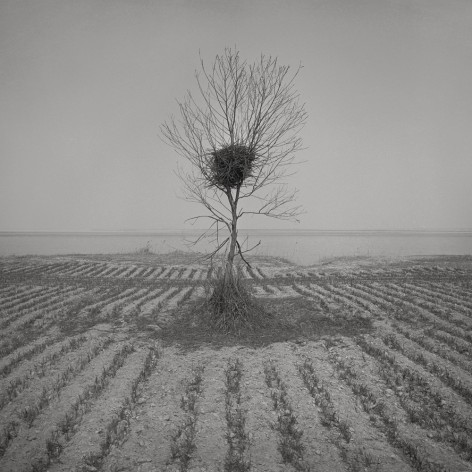Origins juxtaposes the work of two Chinese artists, Cui Fei and Taca Sui, whose understanding of Chinese culture has been profoundly affected and intensified by their long residence in the United States. Cui Fei moved to America in 1996 and Taca Sui currently divides his time between New York and Beijing. From their vantage point in New York, both artists are motivated by a desire to go back to the origins of Chinese civilization, Cui Fei through focusing on the links between calligraphy and forms from the natural world and Taca Sui through the search for the remaining vestiges of ancient Chinese cultural values in remote corners of China. Unlike Cui Fei who finds her raw materials locally in the natural environment wherever she happens to be, Taca Sui travels widely but both artists look beyond the physical evidence for deeper meanings.
Since 1999, Cui Fei has been working on two related series of works – Manuscript of Nature and Tracing the Origin – which continue until the present day. Utilizing “materials found in nature, such as tendrils, leaves and thorns composing a manuscript symbolizing the voiceless messages in nature that are waiting to be discovered and heard, ” she uses them in site-specific installations as well as in prints and photographs. Just as Chinese writing originated from nature as ideograms, the natural materials she uses in her installations become progressively abstracted as they are transformed into two-dimensional works in different media. “The various techniques used in this series – such as installation, printmaking, and photography - symbolize how Chinese written characters have become detached from their origin and, by inference, how humans have also detached themselves from nature. The materials I use in this series are carefully chosen. While dealing with the same issue, I want each process to bring in or highlight a different perspective.”
Although Cui Fei works with materials such as grape tendrils, thorns, beans, and grasses and responds to their different qualities with great sensitivity, she organizes them in a highly methodical manner, aligning them or organizing them in grids that reference the minimalist preference for predictable structures. There is a predilection for counting in works such as Diary in which each blade of grass or bean represents a division of time. Her works are characterized by an elegant balance between opposing qualities, between natural forms and the geometrical way in which they are presented or the organization of ephemeral materials such as sand or salt into carefully transposed but ultimately meaningless pseudo-ideograms.
Contrasting with the organic abstraction of Cui Fei’s work but complementing it at a profound level are the haunting photographs of Taca Sui who is as deeply attuned to the poetics of China in the Zhou Dynasty (1027-771 BC) and the Spring and Autumn Period (770-476 BC) as he is to the early history of photography. Bypassing two-thousand years of Chinese civilization and its present westernized façade, he responds with particular intensity to the Shi Jing, or Book of Odes, the earliest existing collection of Chinese poetry comprising 305 songs and poems, dating from the 10th to the 7th century BC. This collection of popular songs, court poems and hymns, traditionally said to have been selected by Confucius from a much larger number, has had a profound effect on classical Chinese poetry and has occasioned numerous commentaries since the time it was first compiled. Taca Sui has commented that “my search for the broad mountains, flowing rivers, ruined walls and ancient paths of the Book of Odes felt much like a mysterious engagement with an absent partner. During the shoot, it was almost as if my emotions and artistic direction were under the influence of some unknown force.” After months of textual and geographic research, he embarked on journeys to remote parts of China associated with these legendary poems, far from the urbanized life-style characteristic of much of China today. Different groupings of photographs offer poetic insights into the Odes of Wei, The Odes of Qin and Bin, The Odes of Wang and The Odes of Chen.
It is through the stillness and subdued tonality of his photographs, closely cropped images of domestic interiors, Buddhist temples, and patches or arid land as well as more expansive landscapes that he conveys the spiritual truths conveyed in the enigmatic songs and poems of the Book of Odes.
Although not personally acquainted, Cui Fei and Taca share a sensibility that makes a juxtaposition of their respective oeuvres a highly enlightening experience for the viewer. Cui Fei’s responsiveness to the processes of nature illuminates Taca Sui’s evocative photographs in the same way that the photographs provide a context for Cui Fei’s use of tendrils and sand as both medium and subject.
《起源》将两个中国艺术家崔斐和塔可的作品并列展示。崔斐和塔可对中国文化的理解很大程度上都受他们长期在美国居住的影响而更加深刻。崔斐在1996年搬到美国,塔可目前在纽约、北京两地工作生活。身在纽约这一特殊环境,两个艺术家都被一种追溯中国文明起源的共同欲望所驱使——崔斐把关注点放在了书法和自然界形态之间的联系上,而塔可则是通过对中国边远地区古文化价值的遗迹的追寻。
自从1999年崔斐便开始创作两个相关的作品系列:《自然手稿》和《追溯起源》。这两个系列都运用自然界中搜集的材料,而这一创作方式崔斐一直延续至今。两个相对立的元素之间优雅的平衡是崔斐作品的特点,比如自然物的形态和它们所呈现的几何秩序之间的对立与平衡,以及运用像沙子或盐这样不能久存的材料摆设出精致但最终毫无含义的表意文字。与崔斐的作品中天然的抽象成对比,而同时又在某种程度上画龙点睛的是塔可精湛的摄影。塔可对中国古代周朝(公元前1027-771年)和春秋时期(公元前770-476年)的诗作以及摄影的早期历史都深有领会。经过多个月的文字和地理调查,他赴往与中国现存最古老的诗歌集《诗经》有关联的多个边远地区,远离中国今天特征性的城市化的生活方式。尽管崔斐和塔可本身并不相识,但他们有一种相同的感性知觉使得他们二人作品的并列展示带给观者一种颇具启发性的体验。

